Evidence Of Early Metalworking In Arctic Canada – European Technologies Involved
AncientPages.com - A new evidence related to an early (pre-Columbian) European presence in Arctic Canada has been examined in a study conducted by Dr. Patricia Sutherland, an honorary research fellow at the University of Aberdeen.
Dr Sutherland has spent 15 years recovering other specimens in Arctic Canada that resemble those used by Europeans of the Viking and Medieval periods.

The Inuit and earlier peoples of Arctic Canada cold-hammered meteoric iron and native copper in order to make tools, but neither they nor other indigenous peoples of northern North America practized high - temperature metalworking.
Dr Sutherland's team studied artifacts from archaeological sites that had been assumed to relate to pre-Inuit indigenous occupations of the region in the centuries around A.D. 1000 have recently been recognized as having been manufactured using European technologies.
The Viking-age Norse established settlements on the southwestern coast of Greenland about A.D. 1000, and these continued to be occupied until the early 15th century.
Although less than 400 km separated the Norse Greenlandic colonies from the coasts of Arctic Canada, and explorations to the west of Greenland are described in Icelandic sagas, surprisingly little is known of ventures to North America.
The Inuit and earlier peoples of Arctic Canada cold-hammered meteoric iron and native copper in order to make tools, but neither they nor other indigenous peoples of northern North America practized high - temperature metalworking.
The results of the recent research show the earliest evidence of high-temperature non-ferrous metalworking in North America to the north of what is now Mexico.
An object that was found by archaeologists a half-century ago has now been recognized as further evidence of a Viking or Mediaeval Norse presence in Arctic Canada during the centuries around 1000 A.D.
The artifact was originally excavated during the 1960s and identified as the fragment of a small soapstone pot made by the local indigenous people, the Palaeo-Eskimo who occupied the area in the centuries around 1000 A.D.
Now researchers have employed scanning electron microscopy to determine if metal traces were present in a small stone container (about 48 mm tall) from an archaeological site on southern Baffin Island.
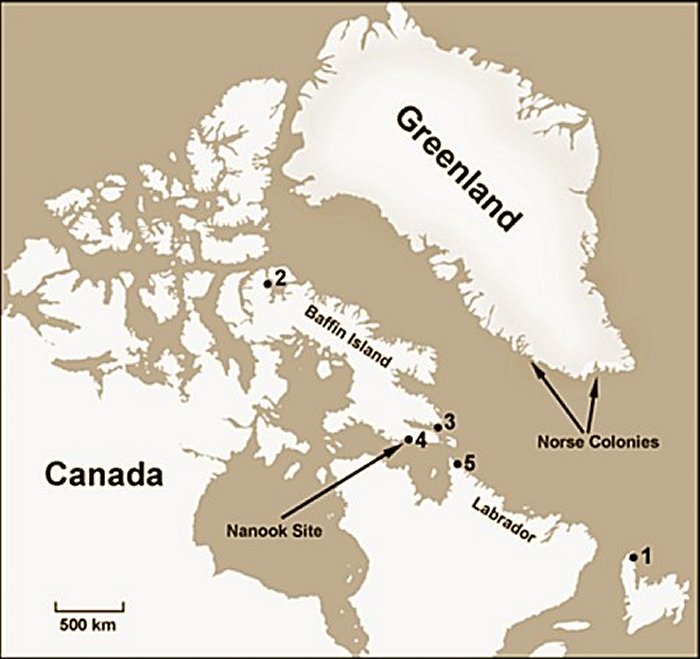
The Vikings and their mediaeval Norse descendants established colonies in southwestern Greenland about 1000 AD, and occupied the region for over 400 years. After more than a decade of research on material from the Eastern Arctic, the evidence indicates a significant early European presence in Arctic Canada.
They found that the interior of the vessel contained fragments of bronze, an alloy of copper and tin, as well as small spherules of glass which are formed when rock is heated to high temperatures.
The object is a crucible for melting bronze, likely in order to cast it into small tools or ornaments. The crucible appears to have been broken while in use, suggesting that it was likely used at the locality where it was found.
Among the Palaeo-Eskimo artifacts Sutherland has identified a wide range of specimens - like lengths of yarn spun from the fur of local animals, whetstones bearing metal traces from tools that had been sharpened, and tally sticks of the type used for recording transactions.
Interestingly, these artifacts resemble those used by Europeans of the Viking and Mediaeval periods.
The Vikings and their mediaeval Norse descendants established colonies in southwestern Greenland about 1000 AD, and occupied the region for over 400 years. After more than a decade of research on material from the Eastern Arctic, the evidence indicates a significant early European presence in Arctic Canada.
The Norse would likely have travelled to the area in order to obtain furs and walrus ivory, either by hunting or by trading with the indigenous people.
AncientPages.com
More From Ancient Pages
-
 One Of Europe’s Most Ancient Domestic Dogs Lived In The Basque Country 17,000 Years Ago
Archaeology | Nov 29, 2022
One Of Europe’s Most Ancient Domestic Dogs Lived In The Basque Country 17,000 Years Ago
Archaeology | Nov 29, 2022 -
 The Hitra Man Lived In A Turbulent Time – Was He A Stone Age Warrior?
Archaeology | May 10, 2024
The Hitra Man Lived In A Turbulent Time – Was He A Stone Age Warrior?
Archaeology | May 10, 2024 -
 Ivan The Terrible: Military Arsenal Unearthed Near Moscow
Archaeology | Jan 2, 2016
Ivan The Terrible: Military Arsenal Unearthed Near Moscow
Archaeology | Jan 2, 2016 -
 Ancient Maya Used An Unknown And Ingenious Method To Prevent Tooth Decay And Infections – Scientists Say
Archaeology | May 24, 2022
Ancient Maya Used An Unknown And Ingenious Method To Prevent Tooth Decay And Infections – Scientists Say
Archaeology | May 24, 2022 -
 Modern Humans Did Not Enter Europe By Sea – New Study Says
Archaeology | Mar 7, 2022
Modern Humans Did Not Enter Europe By Sea – New Study Says
Archaeology | Mar 7, 2022 -
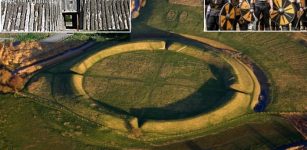 Great Viking Fortresses Built By King Harald Bluetooth
Featured Stories | Dec 12, 2022
Great Viking Fortresses Built By King Harald Bluetooth
Featured Stories | Dec 12, 2022 -
 Drone Footage Reveals Ancient Mesopotamian City Lagash Was Made Of Marsh Islands
Archaeology | Oct 14, 2022
Drone Footage Reveals Ancient Mesopotamian City Lagash Was Made Of Marsh Islands
Archaeology | Oct 14, 2022 -
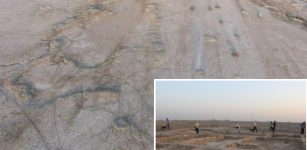 Large 4,000-Year-Old Sumerian Port Discovered In The Desert In Iraq
Archaeology | Apr 4, 2018
Large 4,000-Year-Old Sumerian Port Discovered In The Desert In Iraq
Archaeology | Apr 4, 2018 -
 Secret Passageways And Caves Beneath Nottingham Castle
Featured Stories | Dec 6, 2015
Secret Passageways And Caves Beneath Nottingham Castle
Featured Stories | Dec 6, 2015 -
 North America Was Settled By Previously Unknown People – DNA From A 11,500-Year-Old Skeleton Reveals
Archaeology | Jan 3, 2018
North America Was Settled By Previously Unknown People – DNA From A 11,500-Year-Old Skeleton Reveals
Archaeology | Jan 3, 2018 -
 Mysterious 8,000-Year-Old Petroglyphs Of Unknown Beings Of Sego Canyon, Utah
Featured Stories | Sep 26, 2020
Mysterious 8,000-Year-Old Petroglyphs Of Unknown Beings Of Sego Canyon, Utah
Featured Stories | Sep 26, 2020 -
 Old Kingdom Mastaba Decorated With Rare Paintings Found In Dahshur Necropolis, Egypt
Archaeology | Mar 22, 2024
Old Kingdom Mastaba Decorated With Rare Paintings Found In Dahshur Necropolis, Egypt
Archaeology | Mar 22, 2024 -
 The Vinland Map Is A Fake – New Evidence Uncovered By Scientists
Archaeology | Sep 21, 2021
The Vinland Map Is A Fake – New Evidence Uncovered By Scientists
Archaeology | Sep 21, 2021 -
 Controversial Atacama Skeleton Is Not An Alien – DNA Study Reveals
Archaeology | Mar 23, 2018
Controversial Atacama Skeleton Is Not An Alien – DNA Study Reveals
Archaeology | Mar 23, 2018 -
 Researchers Use 21st Century Methods To Record 2,000 Years Of Ancient Graffiti In Egypt
Archaeology | Mar 31, 2023
Researchers Use 21st Century Methods To Record 2,000 Years Of Ancient Graffiti In Egypt
Archaeology | Mar 31, 2023 -
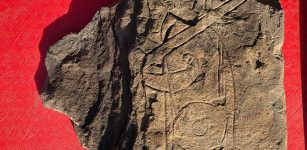 Remarkable Early Medieval ‘Govan Warrior’ Stone Discovered In Glasgow, Scotland
Archaeology | Sep 22, 2023
Remarkable Early Medieval ‘Govan Warrior’ Stone Discovered In Glasgow, Scotland
Archaeology | Sep 22, 2023 -
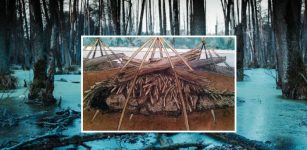 Florida’s Windover Bog Bodies Predate The Egyptian Pyramids And Can Rewrite Ancient American History
Featured Stories | Jun 3, 2021
Florida’s Windover Bog Bodies Predate The Egyptian Pyramids And Can Rewrite Ancient American History
Featured Stories | Jun 3, 2021 -
 Long-Lost Legendary Ancient Temple Discovered On San Miguel Hill In Mexico
Archaeology | Oct 20, 2023
Long-Lost Legendary Ancient Temple Discovered On San Miguel Hill In Mexico
Archaeology | Oct 20, 2023 -
 Mystery Of Arthur’s Stone In UK – Solved?
Archaeology | Aug 11, 2021
Mystery Of Arthur’s Stone In UK – Solved?
Archaeology | Aug 11, 2021 -
 Neanderthals May Have Been Carnivores – New Study
Archaeology | Oct 17, 2022
Neanderthals May Have Been Carnivores – New Study
Archaeology | Oct 17, 2022

